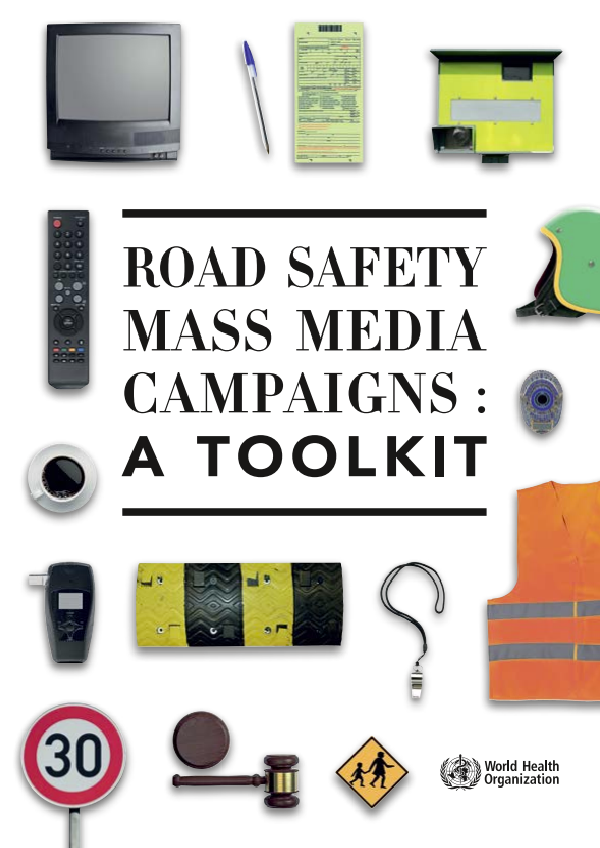Mass media campaigns are an important component of national and local road safety strategies. As part of the Bloomberg Philanthropies Global Road Safety Programme (2010–2014), WHO and its partners developed more than 30 mass media campaigns in nine countries. The campaigns focused on five behavioural risk factors: speeding, drinking and driving, and failing to use motorcycle helmets, seatbelts, and child restraints.
The results and lessons generated from this work are presented in a new document released in December – Road safety mass media campaigns: a toolkit. This step-by-step guide aims to strengthen the implementation of similar campaigns in low- and middle-income countries where the burden of road traffic crashes is highest. It is targeted at those who are charged with overseeing the development of mass media campaigns, as part of broader efforts to increase public awareness of road safety laws and persuade the public to abide by them.
Improving road user behaviour is fundamental to reducing road traffic injuries and fatalities. It is one of five key pillars of the Global Plan for the Decade of Action for Road Safety 2011–2020 (alongside better road safety management, safer road networks, safer vehicles and improved post-crash response).
Road user behaviour can be improved by road safety campaigns, which in combination with behavioural measures (e.g., law enforcement, education or training), can become a powerful way to persuade the public to behave more safely in traffic.1 The Global Plan for the Decade of Action is rooted in the Safe System approach2 which addresses risk factors and interventions affecting road users, vehicles and the road environment in an integrated way, enabling more effective prevention. This approach is known to be appropriate and effective in settings worldwide.
The safe system approach recognizes that travel should be safe for all road users and aims to eliminate fatal crashes and reduce serious injuries through ensuring transport systems take into account human error and the human body’s vulnerability to serious injury. This can be achieved through robust policies on road infrastructure and vehicles and travel speeds, supported by a range of activities relating to education, behaviour change, regulation, enforcement and penalties.
Key safe system principles are:
• Recognition of human error in the transport system. People make mistakes in traffic that can cause injury and death. The safe system approach acknowledges the value of road user behaviour interventions but emphasizes that behaviour is just one of many elements necessary to promote road safety.
• Recognition of human physical vulnerability and limits. The human body has limited tolerance to impact, beyond which serious injury or death occurs.
• Promotion of system accountability. Responsibility for traffic safety must be shared between road users and system designers. While road users must comply with traffic regulations, system designers must develop transport systems that are as safe as possible for users.
• Promotion of ethical values in road safety. People can learn to behave more safely, but inevitably human error may lead to crashes. Death and serious injury are, however, not inevitable consequences.
• Promotion of societal values. The road transport system is expected to be of benefit to society, especially through economic development, human and environmental health, and individual choice.











